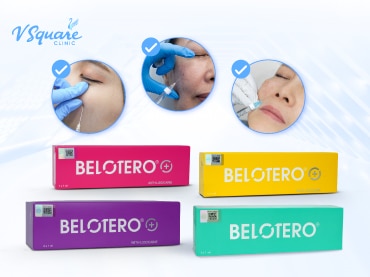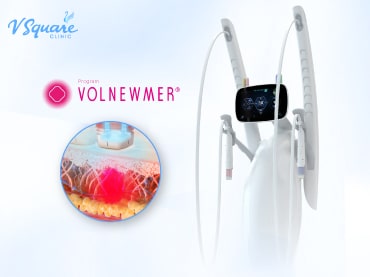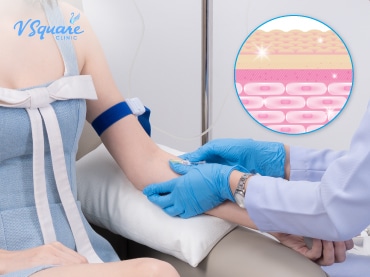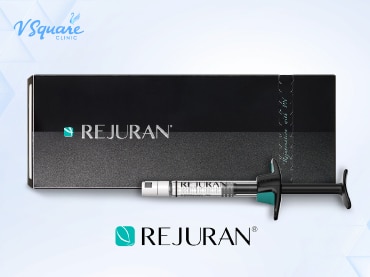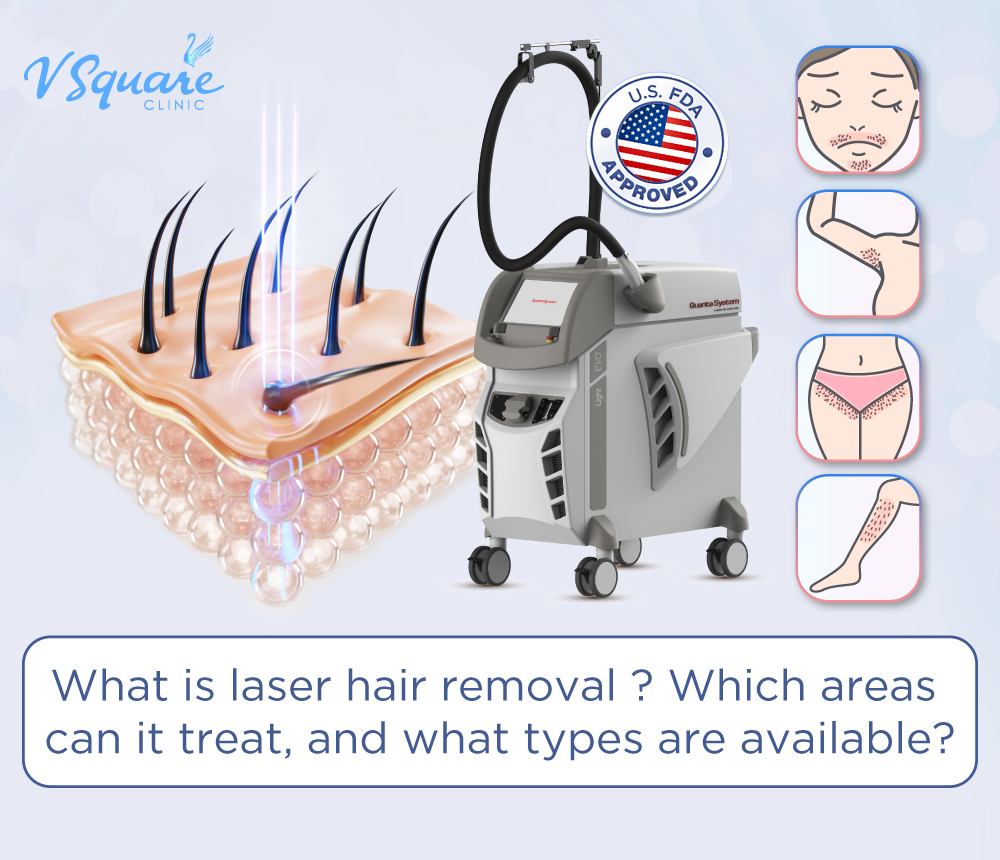
Laser Hair Removal
If you’re planning to get laser hair removal, this article is a must-read.
Laser hair removal is a popular procedure these days. It effectively removes unwanted hair—such as underarm, arm, leg, or bikini line—while also smoothing the skin and preventing ingrown hairs. This is why many people have been choosing it for lasting confidence.
If you’re considering laser hair removal for the first time and want to know what types are available, how many sessions you’ll need, which areas can be treated, whether it hurts, where to go, or how to prepare, all the answers are gathered here.
Table of Content : Laser Hair Removal
What is Laser Hair Removal?
Laser Hair Removal is a permanent hair reduction technique that uses focused laser heat to target hair follicles. The laser energy is absorbed by melanin (pigment) in the hair root, converting to heat that damages the hair shaft, follicle, surrounding tissue, and blood supply, preventing new hair growth.
Over time, hair growth slows down, new hair becomes thinner, lighter in color, and fewer in number—all safely without harming the skin.
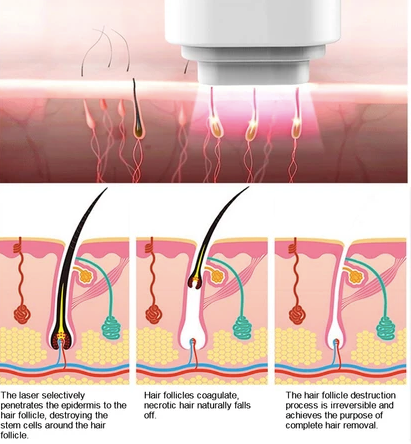
This method is highly effective because the laser wavelength can be adjusted to match different hair and skin types. Note that hair removal lasers and skin treatment lasers use different wavelengths and energy levels—even though some devices allow switching between functions, which will be explained below.
What Types of Laser Hair Removal Are There?
Currently, two main technologies are used: Laser Hair Removal and Intense Pulsed Light (IPL). Both use light but work differently:
- Laser Hair Removal
- How it works: Uses a single, precise wavelength to target melanin in hair follicles—minimizing damage to surrounding skin.
- Effectiveness: Highly effective for long-term hair reduction.
- Wavelengths used: Depends on the laser type—e.g., 755 nm for Alexandrite, 810–1350 nm for Diode, or 1064 nm for YAG.
- Intense Pulsed Light (IPL)
- How it works: Uses multiple wavelengths of light, not a single wavelength like lasers.
- Specificity: Less targeted than laser, resulting in a slightly broader effect.
- Effectiveness: Requires more sessions and generally offers less permanent results compared to laser.
- Wavelength flexibility: Good for hair removal and overall skin improvement, such as reducing pigmentation, redness, and signs of aging.
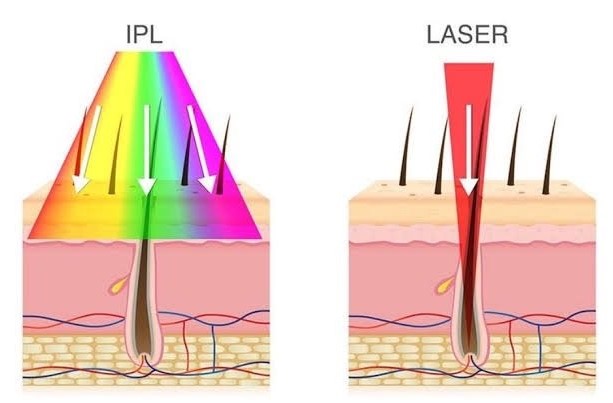
Choosing between these methods depends on individual skin type, hair color, and treatment goals.
How Many Hair Removal Methods Are There?
There are two approaches:
1. Temporary Hair Removal
Temporary methods include shaving, plucking, waxing, or using foams, mousses, and depilatory creams. These are convenient, easy to do at home, and provide immediate results. However, they also come with downsides.
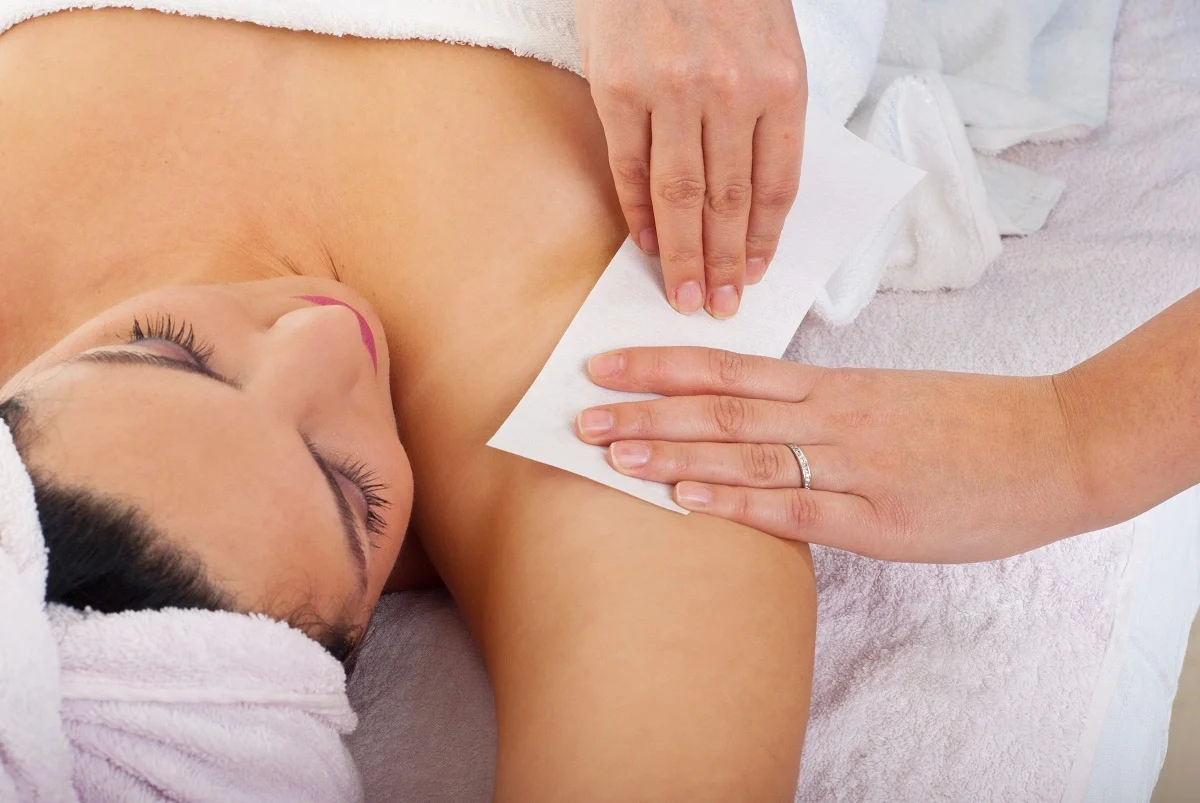
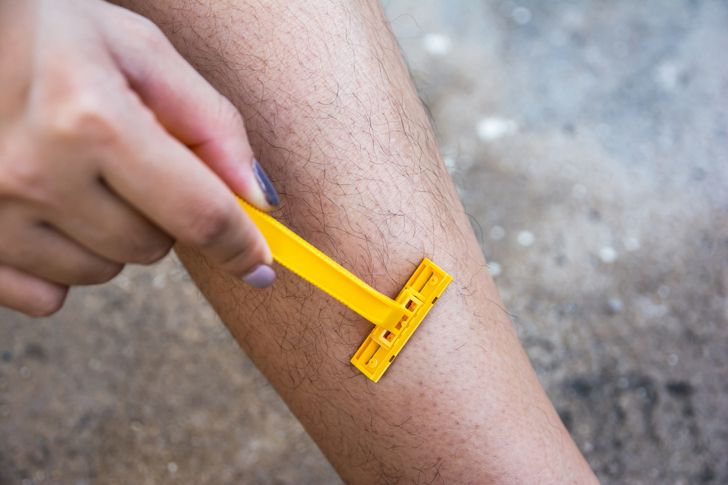
Although these methods effectively remove hair, the results do not last long. Hair tends to grow back quickly—often thicker, coarser, and more stubborn. Regular use can also lead to skin irritation, ingrown hairs, a bumpy “chicken skin” texture, and even allergic reactions in some people.
2. Permanent Hair Removal
Permanent methods involve medical technologies that offer long-term results without the side effects common in temporary solutions. These methods are faster, more effective, and safer—but must be performed by trained professionals. The two most popular and proven methods are:
- Electrolysis or Radiofrequency (RF): This involves inserting a tiny needle into each hair follicle and using electric current to destroy the root permanently. It’s effective but painful, time-consuming, and can leave small scabs or scars.
- Laser Hair Removal: This uses targeted laser heat to destroy the follicle without much pain. It’s the most popular method today due to its speed, precision, and comfort.
Why Choose Permanent Hair Removal?
- Provides fast, effective, and gentle results on the skin
- Slows hair regrowth, making hair finer and lighter
- Leaves skin smooth and free from ingrown hairs or bumps
- Boosts confidence and ensures a clean, polished look
Which Areas Can Be Treated with Laser?
Laser hair removal works on many body areas—depending on your needs:

- Facial hair removal: Includes the beard, upper lip, and sideburns for both men and women. Keeps skin smooth, clear, and less irritated from shaving.
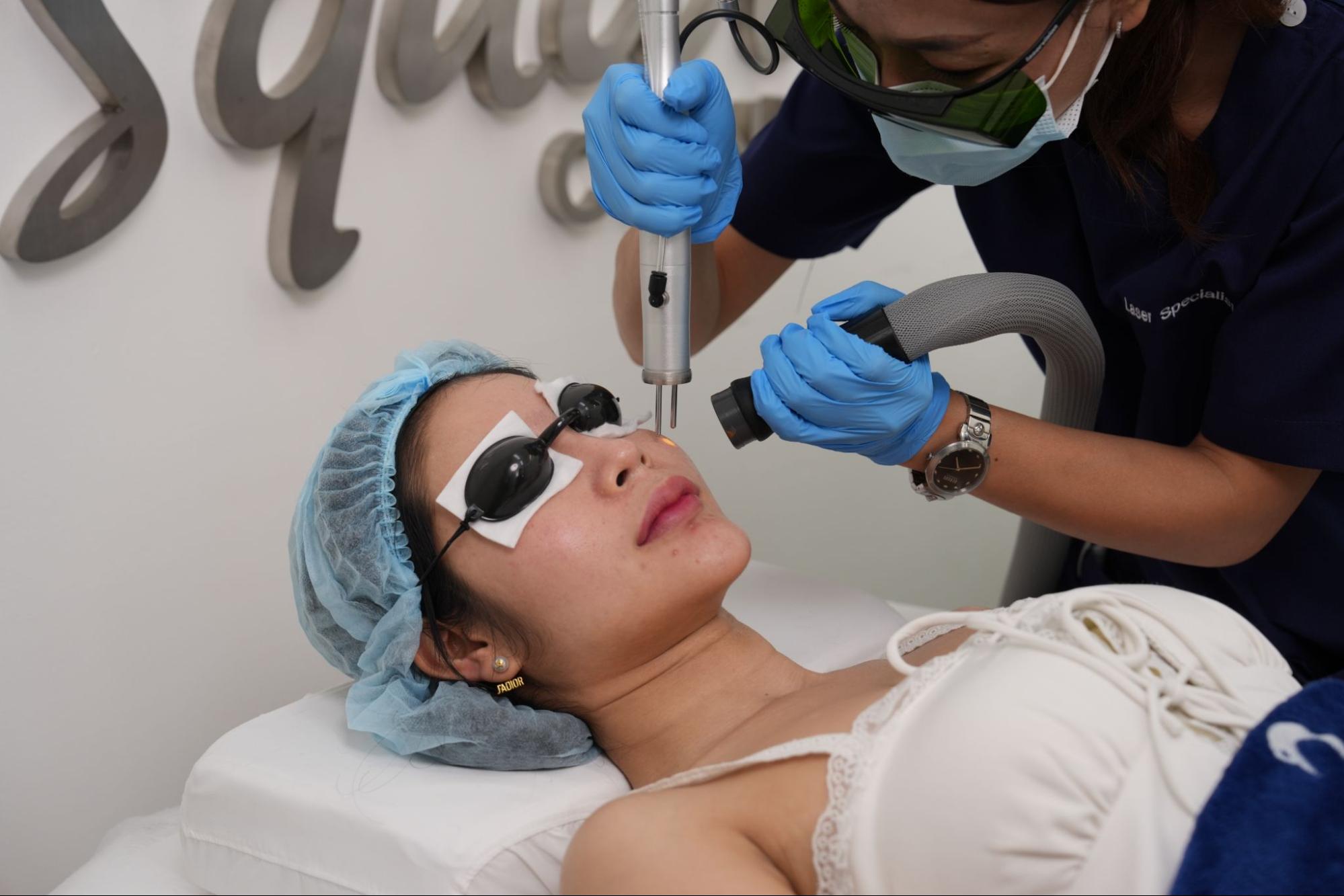
- Hairline (temple) removal: Smooths the hairline, widens the forehead appearance, and can ease rashes caused by hairline irritation.
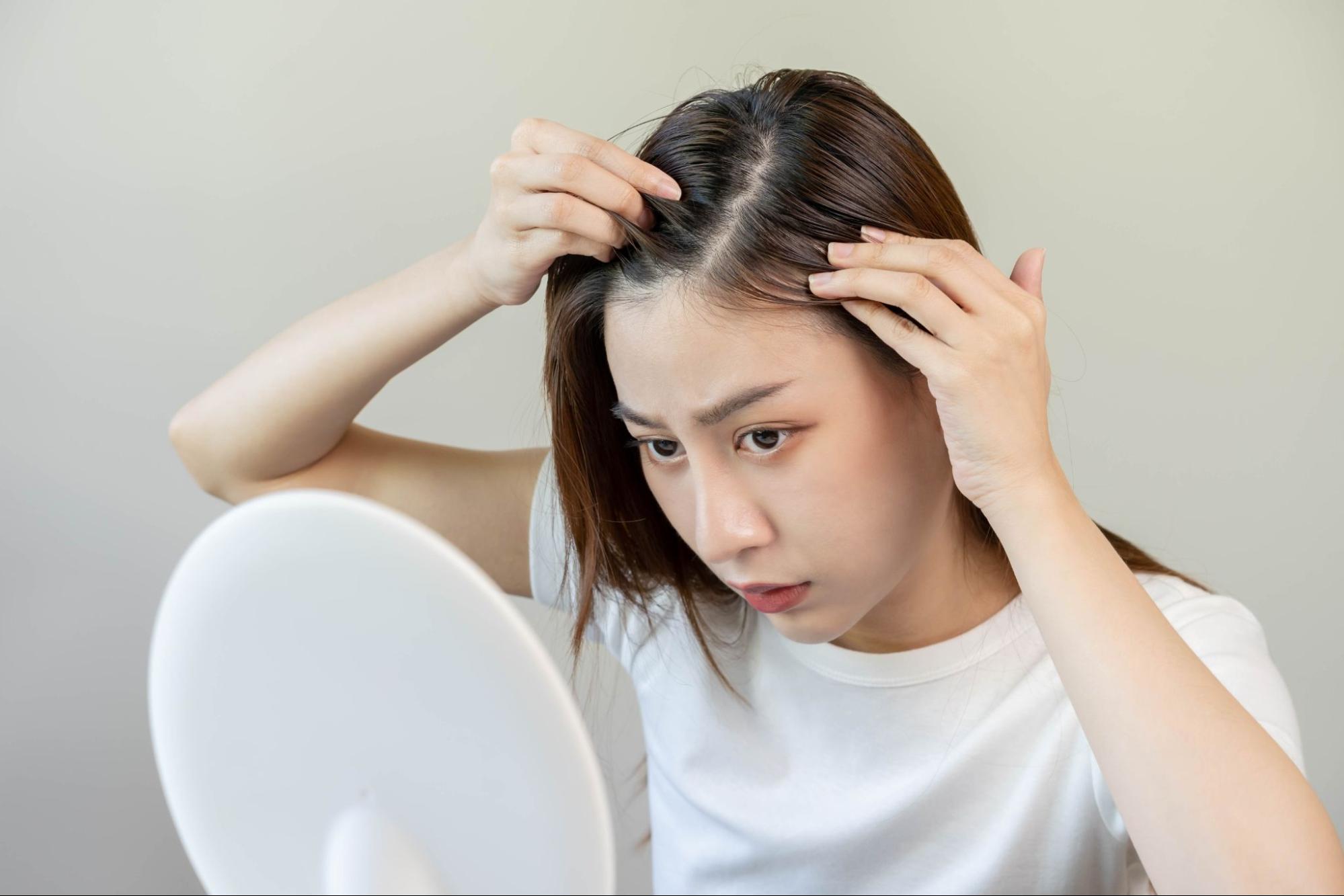
- Underarms: Reduces ingrown hairs, irritation, and body odor, making it ideal for underarm grooming.

- Arms & legs: Popular areas that, when treated, look smoother, brighter, and more touchable.
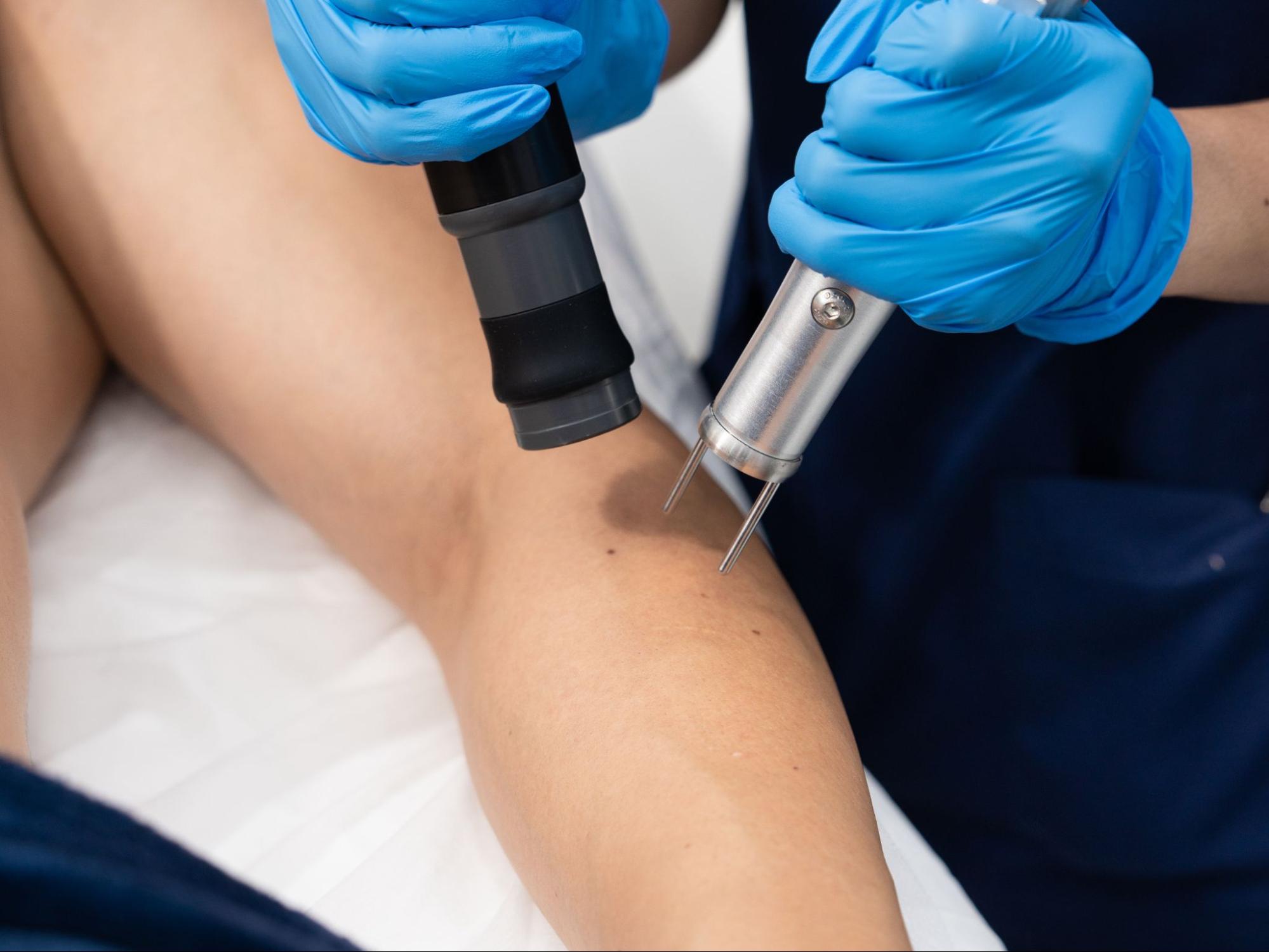
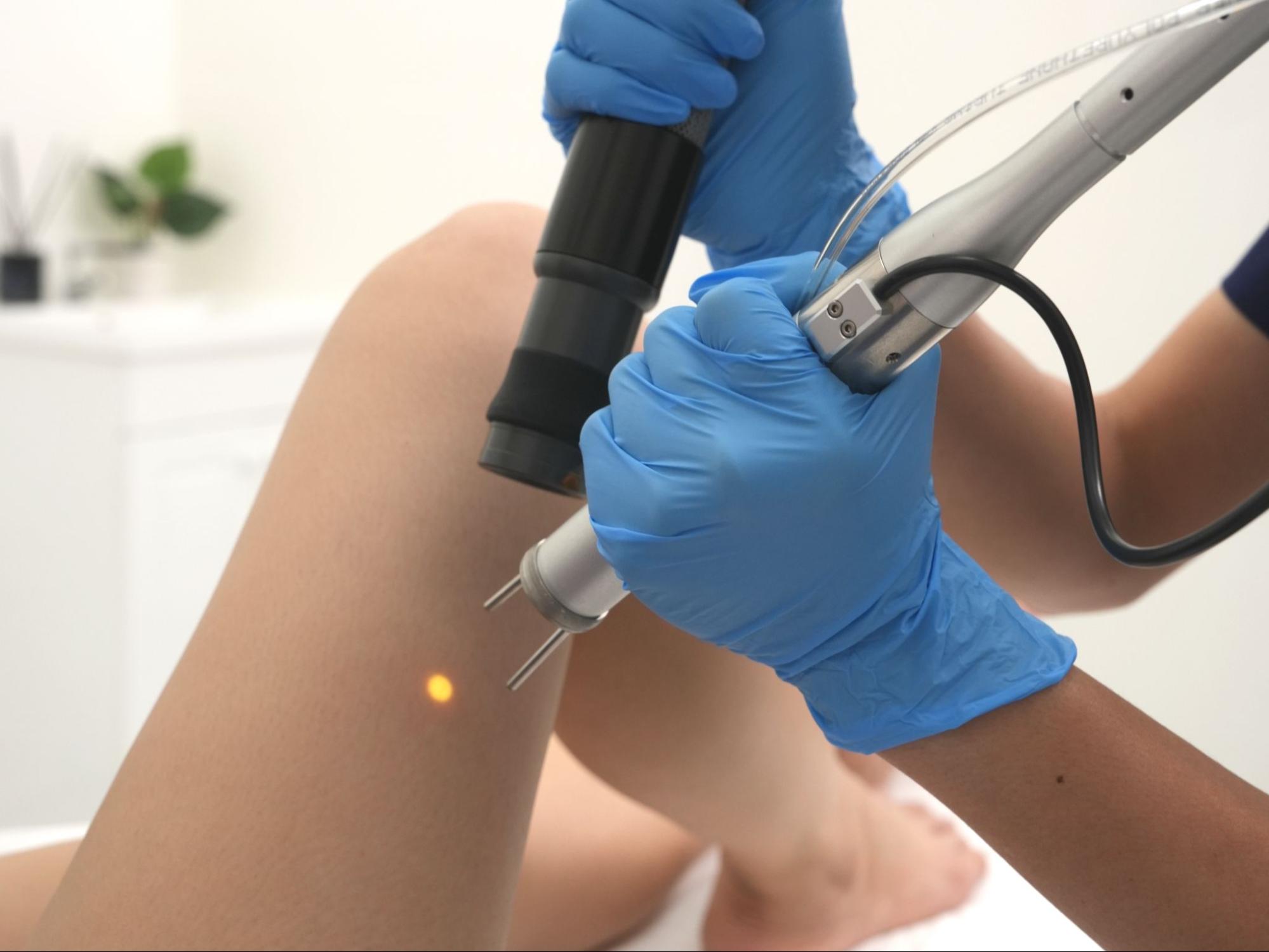
- Bikini area (intimate zones): Removes unwanted hair from intimate areas. Options range from Brazilian laser (complete removal) to Hollywood style.
At V Square Clinic, we offer “Brazilian+” — full hair removal from front, inner area, and around the anus.

- Chest, back, or abdomen: Popular among men, but women also benefit. Achieves smooth, lighter-toned skin.

- Keratosis pilaris (chicken-skin bumps): Targets ingrown hairs by destroying follicles that cause bumps.
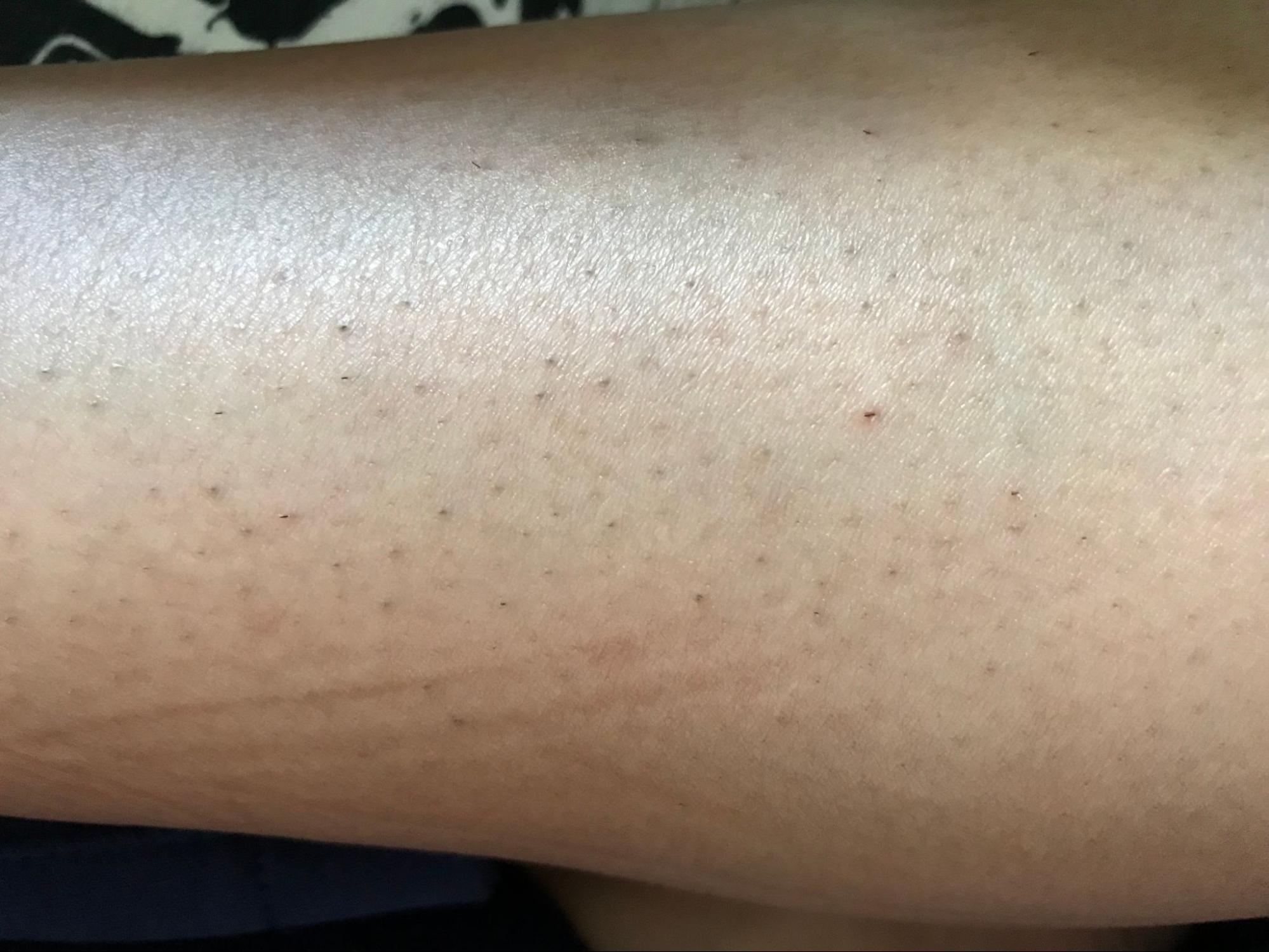
Is Laser Hair Removal Dangerous?
Laser hair removal is safe when performed by a trained professional using a certified laser system. Mild side effects like redness and swelling around follicles are common but resolve within 1 day—cold compresses can help.
Major risks like burns happen only with substandard machines or inexperienced operators.
Does Laser Raise Cancer Risk?
No. Laser hair removal is a safe procedure that does not increase cancer risk.
How Do Different Laser Hair Removal Devices Compare?
There are several types of hair removal lasers used in aesthetic clinics today. Each type has specific properties and is best suited to different skin tones and hair types.
1. Diode Laser
The diode laser is widely popular due to its affordability and effectiveness. It operates across a broad wavelength range (typically 800–1350 nm), allowing the energy to penetrate deep into the skin to damage the hair root. This helps weaken and gradually shed the hair.
In addition to hair removal, diode lasers can also stimulate collagen production and reduce skin dullness. Most patients feel a mild tug or warmth during treatment. However, diode lasers often require multiple sessions for long-term results, and if the settings are not appropriate, there’s a risk that regrowth may become thicker.
2. YAG Laser
YAG lasers are among the safest and most popular technologies for permanent hair removal, especially for individuals with darker skin. With a wavelength of 1064 nm, the YAG laser delivers high-intensity energy deep into the skin, targeting both the follicle and pigmentation effectively. It works well for most skin tones and hair colors—except white or gray hair.
At V Square Clinic, we use the Cool YAG 1064 system, featuring the Light B Evo-Long Pulse Nd:YAG 1064 nm laser from Italy and Germany. This machine is FDA-approved in the U.S., Europe, and Thailand, ensuring both safety and international quality standards.
The Cool YAG 1064 system can reach the deepest layers of the hair root, completely destroying follicle cells. It’s paired with the New Cryo 7 device, which blows cold air up to –30°C to protect the skin and enhance comfort during treatment.

The highlight of the Cool YAG 1064 program is its ability to remove hair more permanently than standard YAG lasers, while remaining gentle on surrounding skin. It slows regrowth, thins the hair, and in many cases prevents it from returning at all—depending on the individual’s hormones and number of sessions.
3. Alexandrite Laser
The Alexandrite laser is considered fairly effective for hair removal. It uses a long-pulsed laser with a wavelength of 755 nm, with an Alexandrite crystal acting as the medium to generate the laser light.
This type of laser penetrates the skin to a moderate depth and is well-absorbed by melanin, which makes it effective in targeting hair roots, especially for individuals with lighter skin tones.
Typically, hair removal with an Alexandrite laser requires multiple sessions—around 5 to 8 treatments spaced about one month apart. The exact number of sessions depends on the area being treated, hair thickness, and individual response to the laser.

“Key Insight: Shorter-wavelength lasers absorb melanin well but don’t reach deep layers, which may increase the risk of skin burns in darker skin tones. This is why Alexandrite and IPL are less preferred in Asia, where YAG lasers are often more widely used.”
How to Prepare Before Laser Hair Removal?
Proper preparation before a laser hair removal session can improve results and reduce side effects. Here are some key tips:
- Avoid plucking or waxing: Do not pluck, wax, or use epilators for at least 2 weeks before your appointment. This ensures the hair roots are intact for the laser to target effectively.
- Limit sun exposure: Avoid sun exposure and products that darken the skin for at least 1 week before treatment. This reduces the chance of pigmentation issues.
- Avoid certain skincare products: Refrain from using retinol, AHAs, deodorants, or any skin-irritating products on the treatment area for at least 3 days.
- Check your skin condition: Make sure the area to be treated is free from inflammation or infections.
- Consult your doctor: If you’re taking medications or have allergies, speak with your doctor to plan your treatment safely and minimize potential risks.
Laser Hair Removal Treatment Steps
- Skin Preparation: The hair will be trimmed or shaved to a length of approximately 0.5–1 millimeter.
- During Treatment: The physical therapist or doctor sets laser energy based on your hair and skin. Cooling is applied simultaneously to protect skin and increase comfort.
- Duration: The treatment duration varies depending on the area size. Underarm treatments usually take about 10–15 minutes, while arms or legs take longer.
Aftercare Tips for Laser Hair Removal
Some mild redness or swelling can occur after treatment but usually resolves within 1–2 days. To support healing and achieve the best results, follow these aftercare instructions:

How to Choose the Right Laser Hair Removal Clinic?
Choosing a reliable clinic is essential for safe and effective results. Consider the following:
- Trained professionals: Ensure treatments are performed by a certified doctor or trained technician who understands hair and skin types.
- Clinic credibility: Choose a licensed clinic with good reviews and proven track records.
- Equipment variety: Look for clinics that offer multiple laser types suited to different skin and hair needs.
- Reasonable pricing: Clinics offering package deals can help reduce costs. Avoid unrealistically low prices, which may indicate substandard devices.
How Much Does Laser Hair Removal Cost?
Prices vary depending on the area being treated and the number of sessions needed. Some areas may require more sessions than others.
Interested in getting laser hair removal at V Square Clinic?
Click here to view our latest promotions.

Note: At V Square Clinic, all treatments are performed in clean, comfortable laser rooms by trained professionals.
Laser Hair Removal Reviews
Results can vary based on hair type, skin condition, laser type, and treatment frequency.
Here are examples from different areas:
Before-After 3 Session
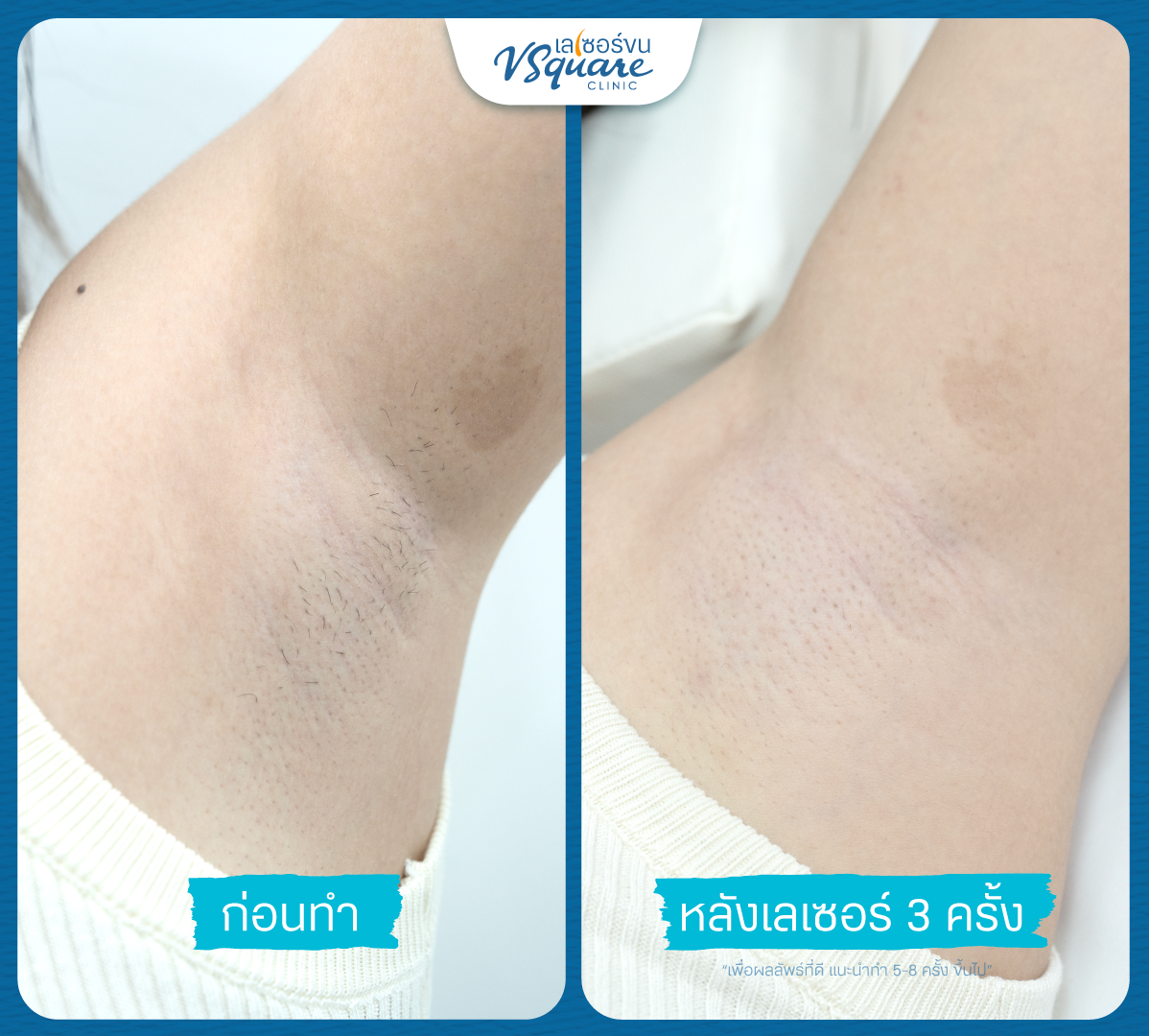

Q&A About Laser Hair Removal
Will the skin feel hot or sting after laser hair removal?
It’s possible to feel a warm or stinging sensation on the treated area during the first 1–2 days after laser hair removal. This is due to the heat generated by the laser energy and is considered a normal reaction. You can apply a cold compress and a gentle moisturizer to help soothe the skin if needed.
How many laser hair removal sessions are typically needed?
In most cases, a full course includes 6–12 sessions depending on the treatment area and hair condition. For best results, 5–8 sessions spaced about 30 days apart are generally recommended.
How long does a laser hair removal session take?
The treatment duration depends on the target area. For example, underarms usually take 10–15 minutes, while larger areas like arms or legs may take longer.
Will hair grow back after laser hair removal treatment?
Each session typically destroys about 20% of hair in the treated area. To maintain consistent results, monthly treatments are recommended. Most people require at least 5 sessions to see full reduction. Results can last 1–2 years before maintenance is needed.
Why does it feel itchy after laser hair removal treatment?
Mild itching is a common temporary reaction after laser hair removal, caused by the heat interacting with your skin. It usually resolves on its own. Avoid scratching or rubbing the area to prevent irritation or infection.
Is laser hair removal painful?
Laser hair removal is generally not painful. You may feel a warm, tingling, or slight snapping sensation during treatment, which is usually well tolerated. Cooling gel or cold air is used to minimize discomfort. For sensitive areas like the upper lip or bikini line, numbing cream can also be applied in advance.
Summary: Laser Hair Removal—A Convenient, Effective, and Permanent Solution
Laser hair removal offers long-lasting convenience, smooth skin, and increased confidence. It’s a widely accepted, safe, and cost-effective procedure.
If you’re considering treatment, research thoroughly and choose a reputable clinic with certified equipment—so you can enjoy the best results with peace of mind.
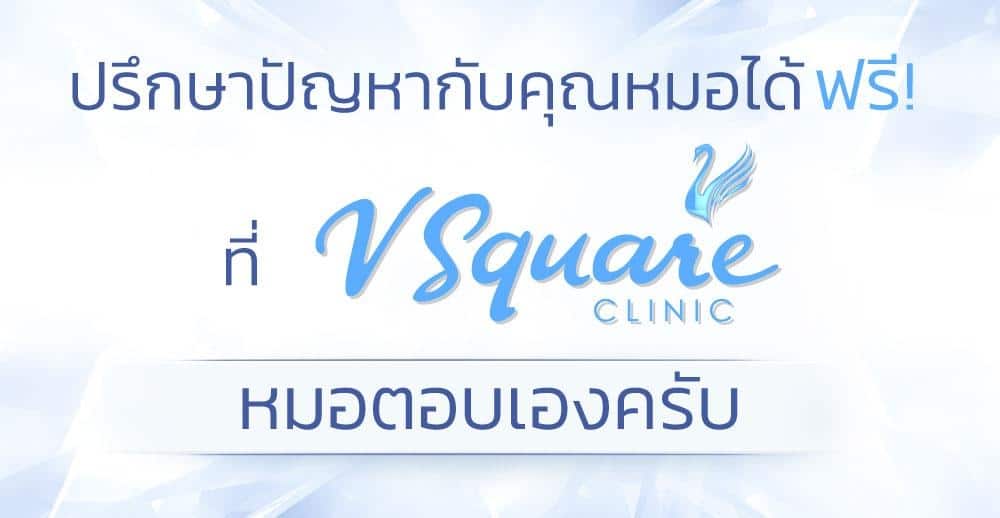
สำหรับผู้อ่านทุกท่านที่มีข้อสงสัยเพิ่มเติม ทีมแพทย์ V Square Clinic ทุกคนยินดีให้คำปรึกษาฟรี โดยไม่มีค่าใช้จ่าย หรือสามารถปรึกษาหมอทาง inbox facebook หรือ Line นี้ได้เลยครับ หมอตอบเองครับ



